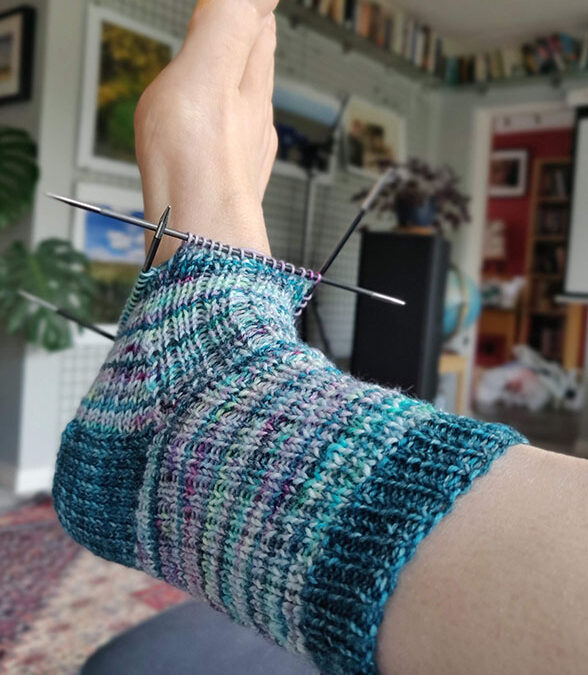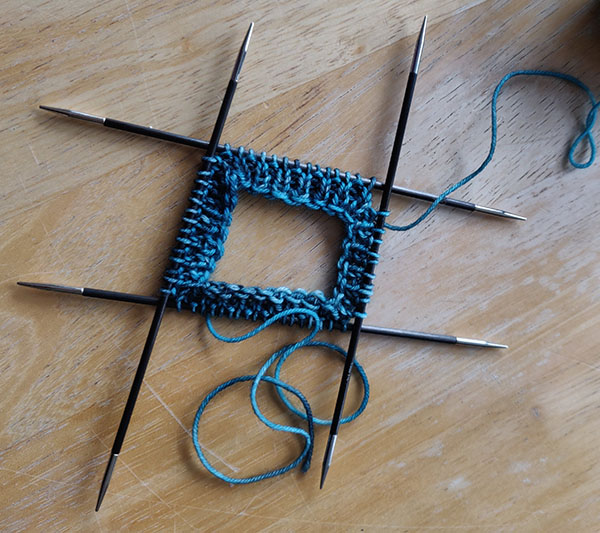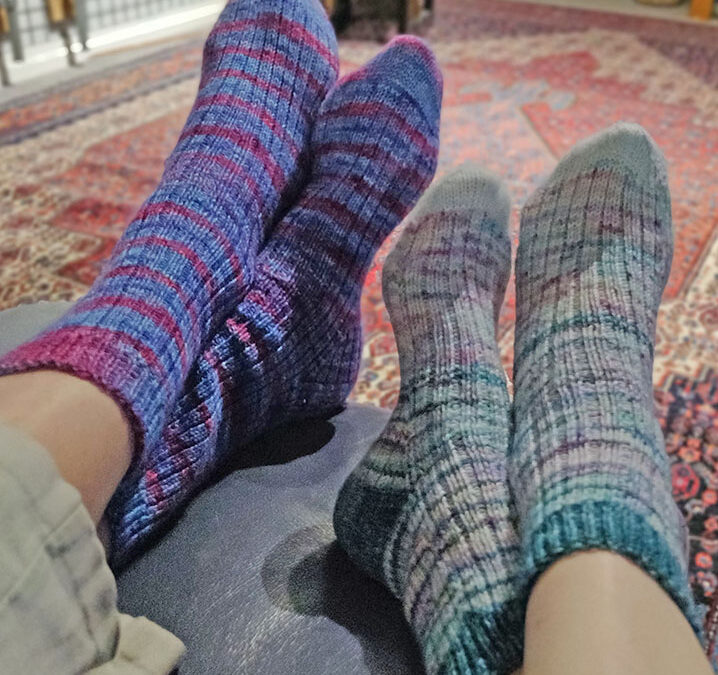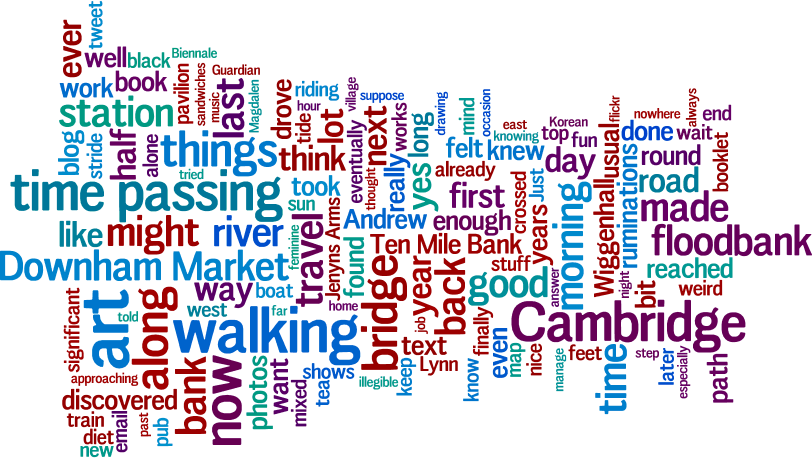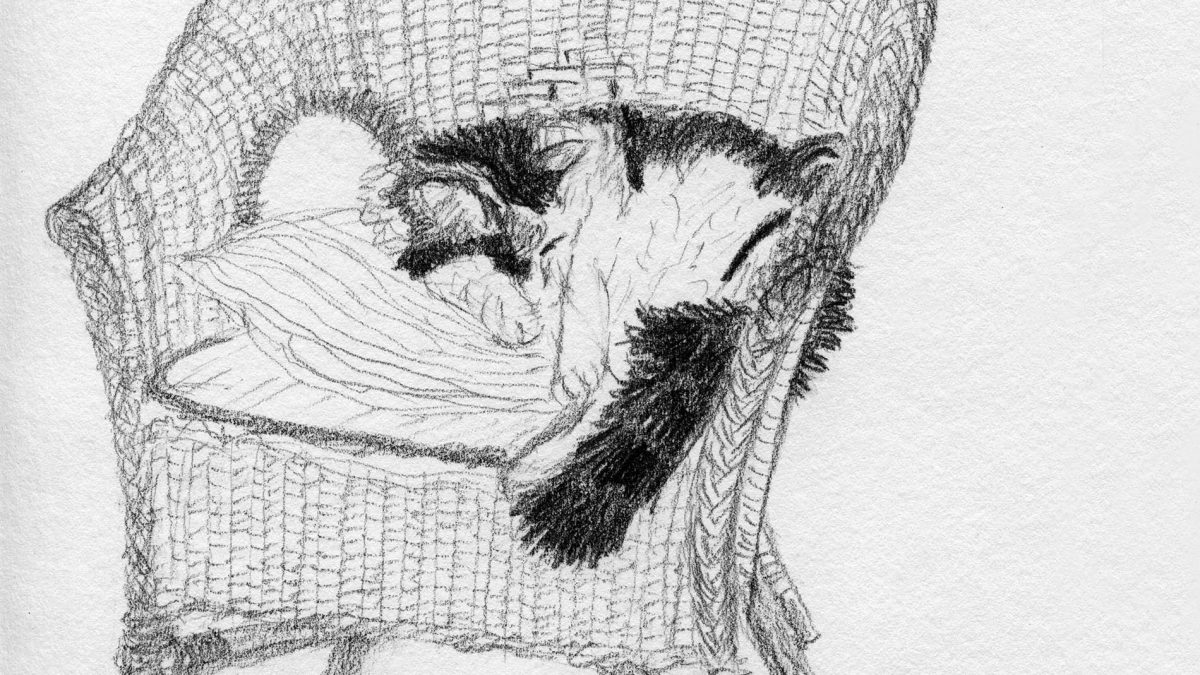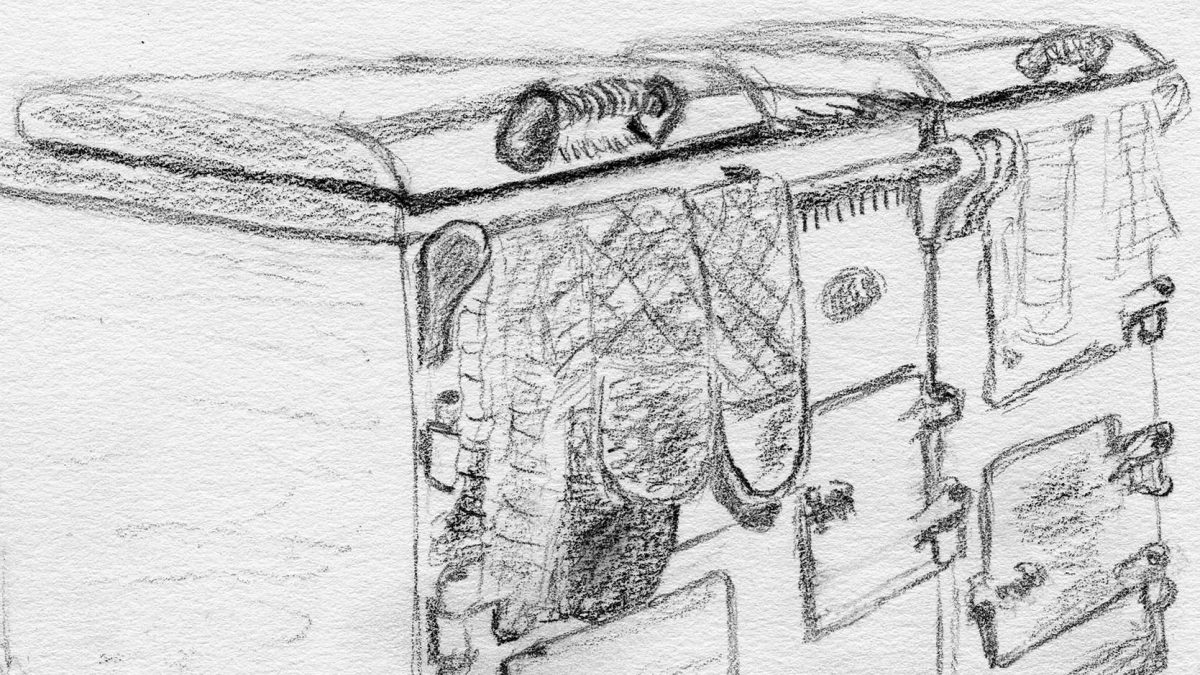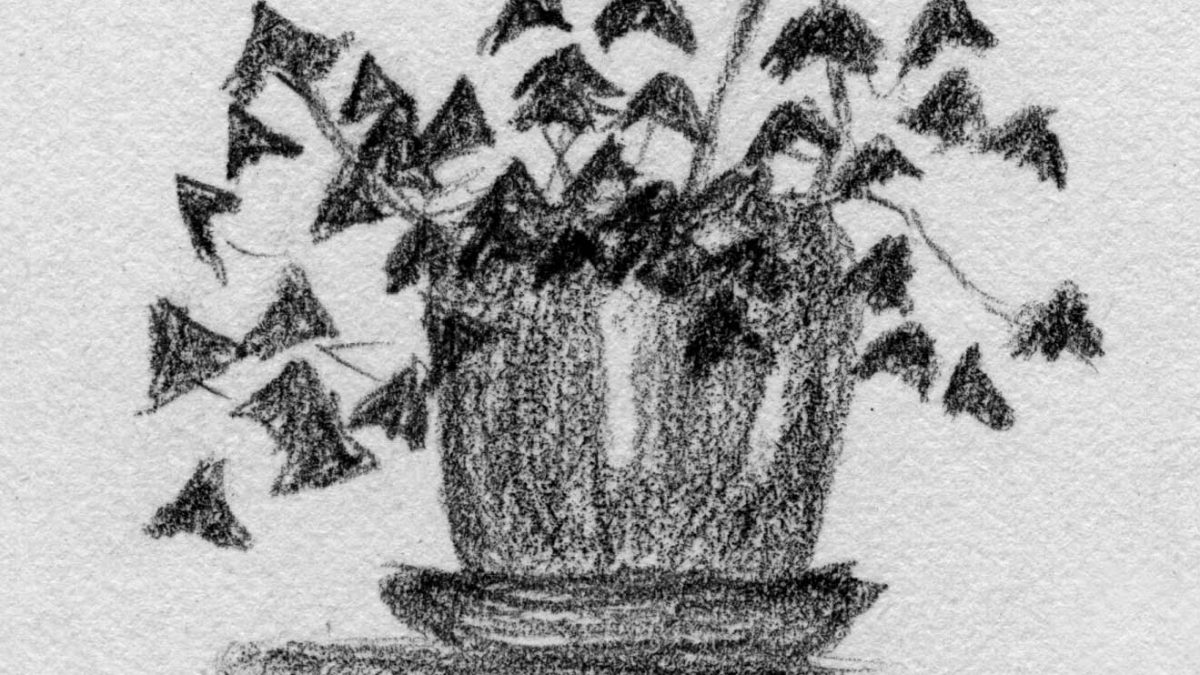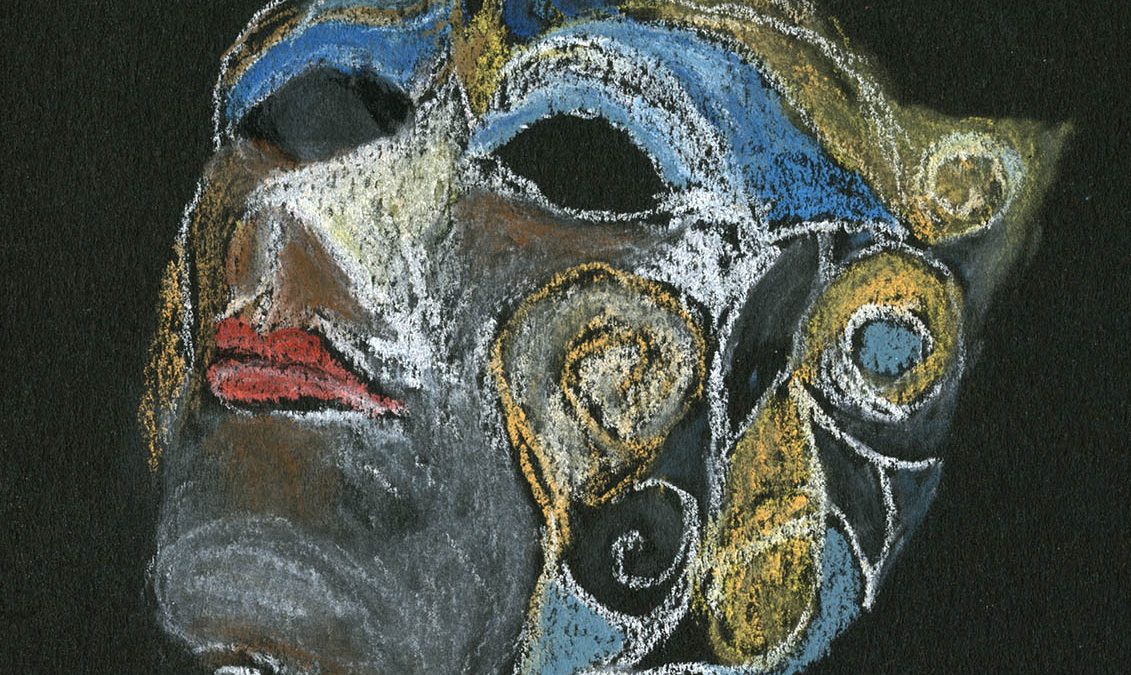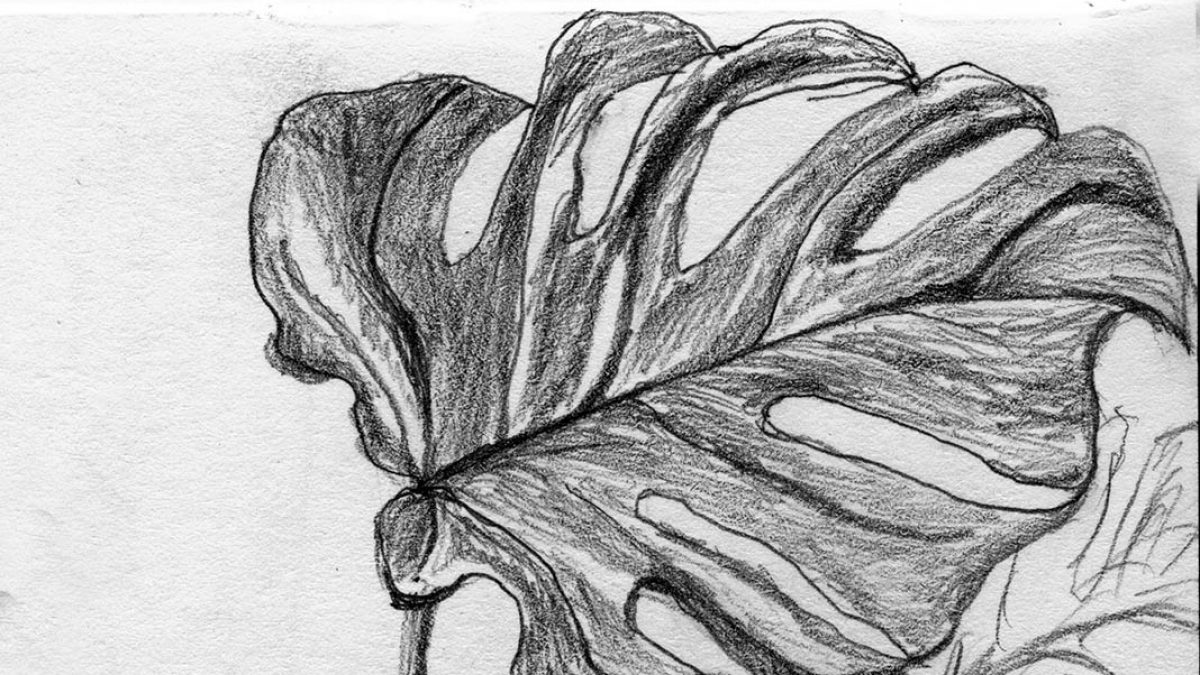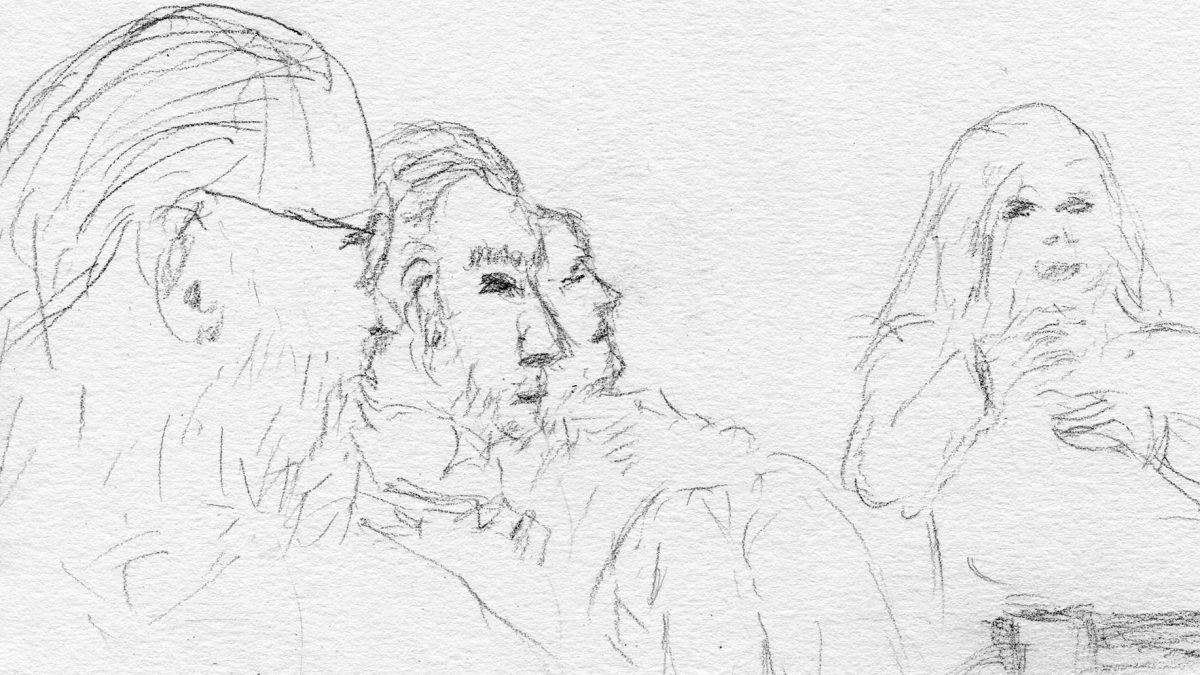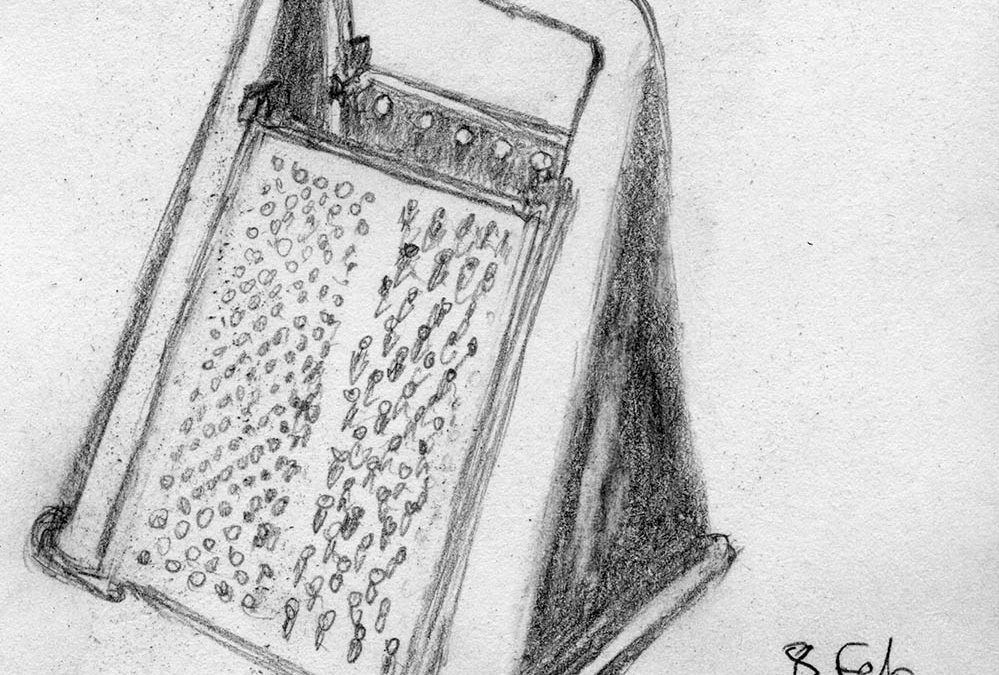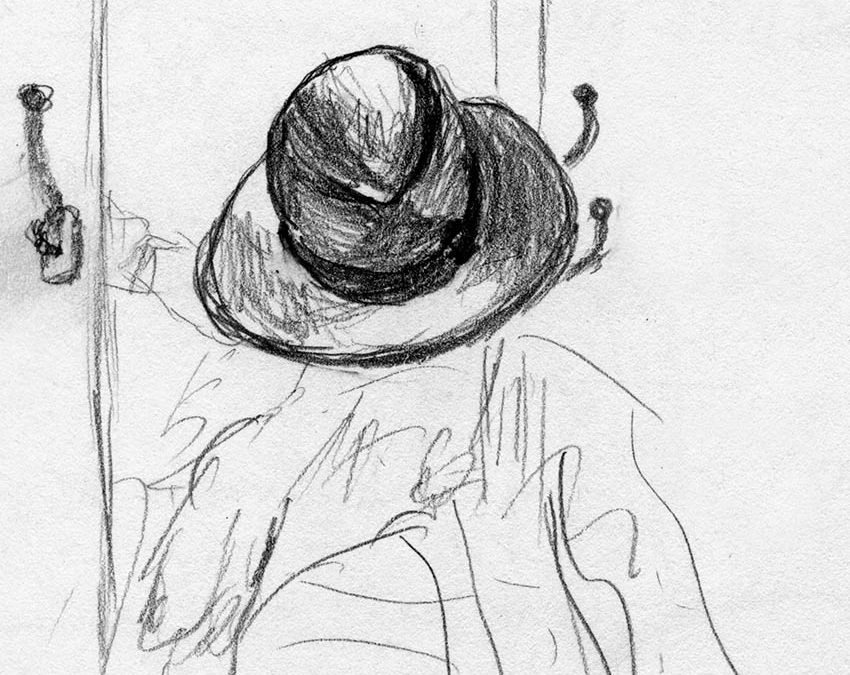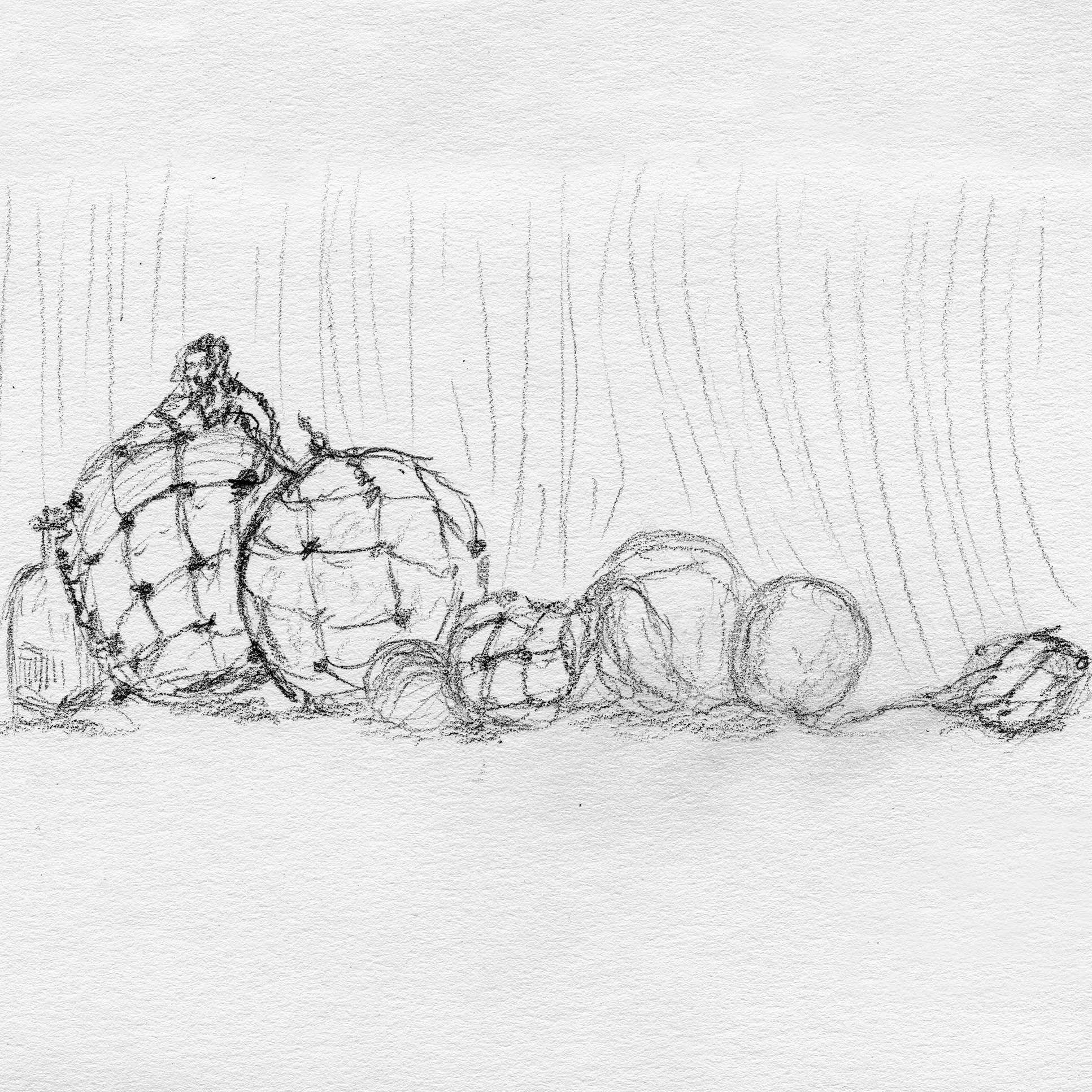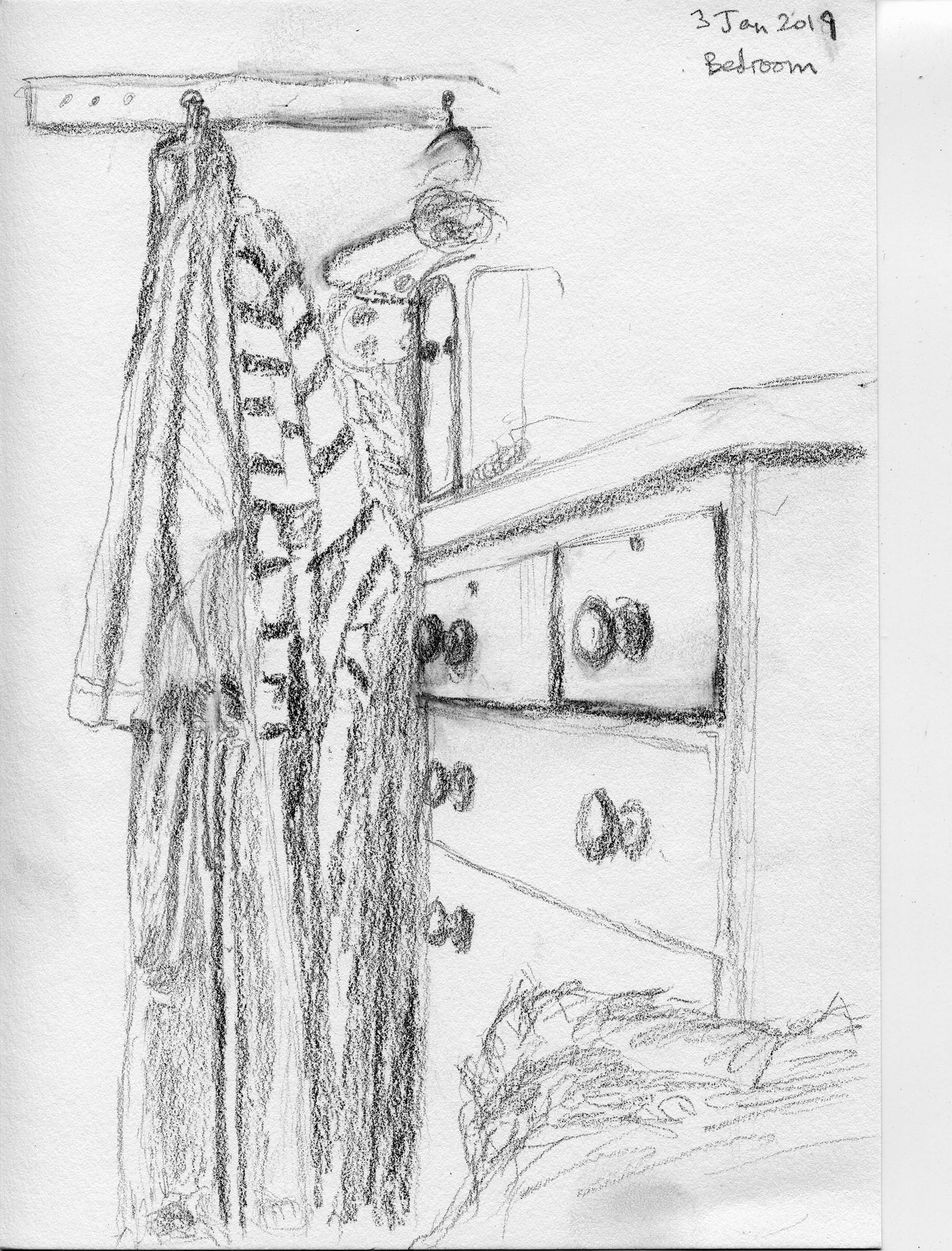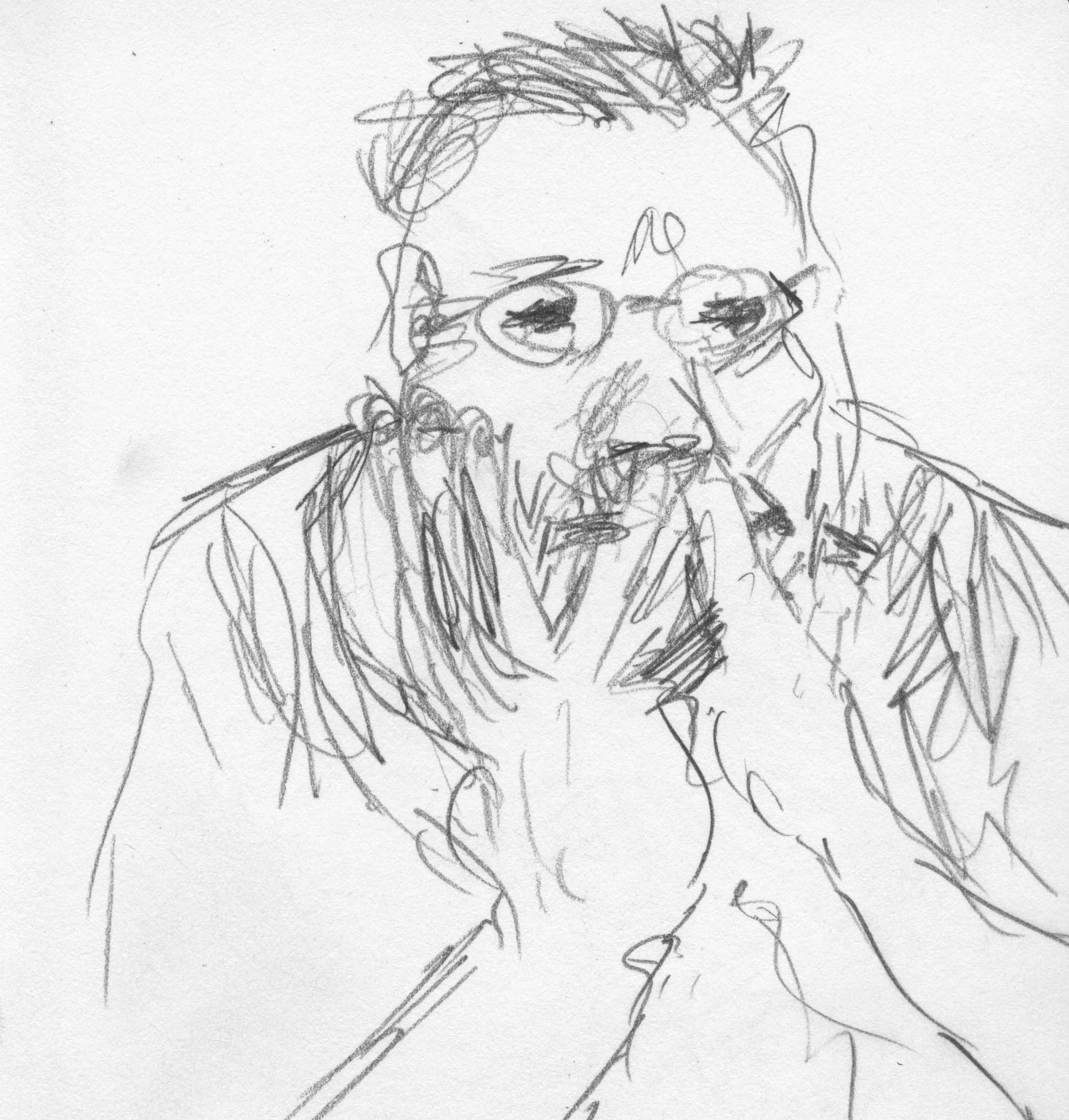Donna Leon’s Guido Brunetti novels are always set in the ‘now’. She has written one a year, more or less, since 1992, and they feature the same cast of central characters. These characters do age a little bit, but they have not become anywhere near 30 years older. Their habits and preoccupations, though, have gradually changed with the times.
I got interested in tracking how this happens. Here is a list of some details that I noticed about the world described in each book; I’ve tried to summarize just the relevant changes while avoiding significant plot spoilers.
Rereading the books to prepare this was a great pleasure: they are beautifully written, and they evoke Venice so clearly. Knowing how the plot turned out does not dent my enjoyment very much.
I’ve given a lot of detail for the first few books, because they are the baseline; and from my perspective as I write this in the 2020s I can see more things that have changed since then.
I think the author herself might have become more interested in markers of the passage of time as the years have gone on, and as she became more confident in her own decision to delay the characters’ aging while the world changes around them: the more recent books seem to mention such changes deliberately. She has also made it clear in interviews recently that she is using the books to express her opinions about current events and to protest about changes that she views as undesirable, especially ecological dangers and the excessive growth of tourism in Venice.
A problem comes up from time to time when the life histories of the slowly aging characters have interacted with real past events, particularly the Second World War—which is important in Brunetti’s memories of his childhood, although is it now implausibly long ago for a man of his age to remember.
Dates here for the books are publication dates. Of course, each book was written some months before it was published.
This post is incomplete.
1992
Death at La Fenice (#1)
Brunetti gets information from newspapers as background to a case. People receive telegrams. If you want to make a long-distance phone call and don’t know the number, you can ask the interurban operator for it. Information is routinely obtained by making phone calls: for example, phoning the railway station to find out the time of a train. Phones are answered by people who take messages or tell you how else to contact the person you wanted. Neighbourhood newspaper vendors in their kiosks are important sources of local information, for example on how to find addresses.
Wealthy people have music on sets of compact discs. A teenager who excels at maths is getting a laptop computer for schoolwork; it is more efficient than pen and paper, so she will have time to do more advanced work.
There are various gay characters, who encounter various degrees of prejudice. Within the theatrical world, male homosexuals are pretty much accepted, though there are also a few notable homophobes. However, for women it is more problematic even there, and they generally conceal their orientation. A divorced mother must conceal the fact that she is now in a same-sex relationship, or she will lose custody of her children. Brunetti is not very familiar with gay people, though he treats them respectfully and tries very hard to accept them.
What older characters did during the Nazi/Fascist period and the war is an important part of their personal histories, though some may have been rehabilitated since (Kurt Waldheim is mentioned as a well-known example).
At a crime scene, the medical examiner puts on latex gloves; nobody else has protective clothing, though the police are careful to handle objects delicately, touching only the corners. Lab technicians are insolent and uncaring; they are protected by their union. Medical professionals often smoke.
An autopsy is performed at San Michele, the cemetery island; Brunetti goes there on the #5 vaporetto, which cuts through the Arsenale canal. The streets of Venice are deserted after 9-10pm, at least in winter. Giudecca is a sinister, backward place where someone might live in desperate poverty.
Benetton is a popular clothing brand, and everyone watches Dynasty on television.
1993
Death in a Strange Country (#2)
Italy, unlike the USA, has no system of public reference libraries, and consulting a university library would require special permission: Brunetti therefore buys books from a bookshop to research the background to a case. He has a (printed) railway timetable in his desk drawer, and flips through it to find the time of a train. From his desk phone, he calls the operator (a young recruit who sits in a cubicle downstairs), who has directories for other cities and can look up a number and call him back via a buzzing intercom. Leaving a message on an answering machine makes him feel foolish. Police in other parts of the country respond to his enquiries by (paper) letter.
In recent years there has been a rise in sensationalistic journalism. Many men read the Gazzetino dello Sport, which is printed on pink paper; Salvatore Schillaci is featured in it. A car driver keeps a stack of paper maps in the glove compartment; there is a push-button on the dashboard to move the mileometer back to zero.
A home stereo system has amplifier, tape deck, and CD player. An office at the American base in Vicenza has a computer terminal, and a Sergeant there has a home computer with a printer, but the Questura uses paper logbooks to manage staff rotas. On the Riva degli Schiavoni there is a public phone that takes a magnetic phone card for payment. A young man’s wallet contains, as well as cash and his identity card, the usual assortment of plastic cards and scraps of paper with phone numbers scribbled on them.
The Carabinieri are reputed to be above corruption (unlike other police), but also stupid. Italian policemen are scornful of a female American army officer. The US Army consists of career soldiers who like their jobs, whereas Italy has compulsory military service, and so has unwilling, lazy boy soldiers. The teenage son of a Fascist committed a homophobic murder recently, and is now receiving psychiatric treatment.
Europe has been transformed by recent events, and Italy is now attractive to poor immigrants; in previous generations, Italians fled to seek their fortunes abroad. The Italian Communist Party has died. The Mafia has started moving up to northern Italy. Mainland Italy has a lot of ugly modern construction and is becoming dominated by the automobile. The Gulf War is mentioned: an arms exporter broke the boycott to sell to Iraq; an American looks like the soldiers in the photos.
Brunetti remembers swimming in the Grand Canal as a boy, before it got so dirty; twenty years ago the laguna was a clear, translucent blue. Older people remember when Venice was poor and there were no tourists; in those days salt was heavily taxed and expensive, and they saved money by using the salty canal water for cooking. Huge sums raised to ‘save’ Venice after the 1966 floods seem to have disappeared with no effect. In recent years, tourists from the newly freed Eastern Europe have begun to visit by coach; they stay only for one day. The Pullman Bar at Piazzale Roma has been pulled down; the area between there and the railway station is as close to a slum as the island of Venice has. The church of San Lorenzo, opposite the Questura where Brunetti works, has been closed, covered with scaffolding, and supposedly under restoration for the past five years; it never appears to change.
There is a growing anti-fur sentiment, shared by the Brunetti teenage children; their mother chooses not to wear her fur coat. The family also insists on buying mineral water in glass, not plastic, bottles, for environmental reasons. The Karin B toxic waste scandal of 1988 is mentioned as having happened a few years ago. At the Casino, almost everybody smokes. Duca D’Aosta is an admired upmarket clothing brand for men; Benetton is where ordinary young people buy clothes.
1994
The Anonymous Venetian (#3)
Brunetti encounters men who work as transvestite prostitutes. He treats them respectfully, but it is clear that most other people don’t. He is disgusted by the homophobic attitudes of some police officers, particularly younger ones. Transvestites are new to him, but he has previously assisted a transsexual woman to get her identity card changed to show her as female. He and his wife have gay friends, but his understanding of their lives is not very deep, and he still has some unthinking prejudices; his wife, who knows these friends a lot better, has to educate him. Prostitutes, male and female, may have AIDS and infect their clients. Pornography is distributed via video cassettes, and is a huge industry.
Venetians often move out of the city because apartments are expensive and hard to find. Landlords prefer to rent to outsiders rather than Venetians, who might be too difficult to remove later. An affluent character owns a beautifully renovated house, which was still a run-down boat repair workshop eight years ago. Castello is still the most working-class sestiere, where families speak Veneziano, but even in Castello some areas are becoming fashionable and more expensive. The style of a modern building in Mestre—a sleek, tall, glass-fronted rectangle—already looks ten years out of date. By law, residents must register with the city authorities (this law is described as a holdover from the past).
Tourists in Venice in August are dressed as if for the beach; the Venetians disapprove. Police cars from Mestre are air conditioned. At the Questura, Patta has one of the few offices with air conditioning. Vianello, after a skin cancer scare, now avoids exposure to the sun and tries to persuade others to do the same. He is interested in the new Green Party. Venetians have become worried about pollution of the Adriatic beaches and the presence of heavy metals, such as mercury, in the fish they eat.
The ex-Soviet Union is mentioned. Russia as a separate country is still new. A formal, conventional woman has a ‘Margaret Thatcher coiffure’. The 1992 murder of Judge Falcone is remembered as a recent frightening event.
The teenage children sit with the family, but are absorbed in books or magazines. They enjoy eating meat.
The seat-belt warning buzzer in a car is a novelty to Brunetti (who does not spend much time in cars, of course, as he lives in Venice). A police statement is typed; the witness signs both the original and a Xerox copy of it. A team of three visiting investigators from the Guardia di Finanza works with two pocket calculators and one laptop computer between them. The records they are investigating (from a bank) are on paper; some were printed out from a computer, and show transactions made by bank staff who used a key code to identify themselves.
Brunetti has a telephone book in his desk drawer; he uses it to look up addresses and phone numbers. It contains yellow pages for business listings. His wife has an address book containing friends’ addresses, which she takes with her on holiday. Answering machines are becoming increasingly common, though people who have them are still getting used to the procedure of setting them up and changing the outgoing message. Brunetti leaves a message on one without any fuss. If people are out or away, all you can do to contact them is leave a message asking them to call you when they get back. If you are out and about, visiting an office for example, and need to make a call, you can use their phone. The police can ask the operator to check whether an engaged number has been left off the hook (is not connected to another number). From a police boat you can speak to the Questura by radio; patrolling police also have radios.
This is the story in which Signorina Elettra Zorzi first appears; she has just started working at the Questura. She immediately acquires a computer console with an attached printer next to her desk. She uses her computer to acquire information—so it must be connected to the Internet somehow, but the details are left vague. She also spends a lot of time searching the archives (paper files from the times before police records began to switch over to computers), which are kept downstairs on the ground floor; their filing scheme is a mess, which nobody else understands, but she quickly learns how to find information from them. Brunetti himself still types reports on an Olivetti standard typewriter in his office; he wonders whether it might be good to get a computer instead, but is worried about whether he would also be allowed a printer; if not, his print-outs would be seen by people in the secretaries’ office.
Brunetti’s mother is in a care home run by nuns. The male and female residents live on separate floors. Paola (his wife) is known to strangers as Signora Brunetti. Brunetti doesn’t like exposing female officers to danger; Vianello disapproves of this sexist attitude.
1995
A Venetian Reckoning (#4)
The war in Bosnia is mentioned. The fall of Communism is a recent event, and Italian businesses are now trading with eastern European countries such as Czechoslovakia. A story about the infrastructure expansion work for Milan Malpensa airport is recent news, and there are several allusions to recent national corruption scandals and police investigations relating to them; there is general disgust with the state of national politics (Vianello votes for the Lega Nord, seeing Rome as the source of problems). The police budget for next year is to be cut by 15-20%. Two years ago, Brunetti would have been shocked at a policeman asking an investigative journalist whether another policeman could be trusted; today, it does not surprise him. Mafia-controlled businesses in Mestre are a perennial problem; Mafia involvement must always be considered when investigating crimes.
For decades, as long as Brunetti can remember, some part or other of the facade of San Marco has been covered in wooden scaffolding; the tower has also been covered with scaffolding (resembling a pagoda) for the past few years. Tourists feed corn to the pigeons, and one films another, using a video camera the size of a machine gun. To smoke when sitting in a cafe, even Florian’s, is normal. A used vaporetto ticket makes a convenient bookmark. Autopsies are now performed at the Ospedale Civile. A psychiatrist (a woman) occasionally does consulting for the police, and may be more successful in questioning a woman than a detective would be (the detectives are all male).
Playing cards in a cheap bar, a man casually loses about 10,000 lire. The standard drink for women at the bar is a glass of low-quality Prosecco. A prostitute asks for 100,000 lire, but settles for 50,000. Her room is lit by a low-watt bulb hanging from the ceiling by a wire. A prosperous lawyer has a small calculator in a slot in the lid of his briefcase, to assist with pen and paper calculations when travelling. An Intercity train has compartments and (unlike other trains) a public address system. An accountant’s elegant open-plan office has desks separated by folding waist-high screens covered in linen; each desk has a computer terminal and screen.
Signorina Elettra’s phone has a light that blinks to show that Patta’s line is busy (she’s his secretary). Brunetti from his desk calls colleagues elsewhere in the building by dialing their extension numbers. He has a direct line to his office, which is safe from eavesdroppers. When he needs a report quickly, Signorina Elettra types the information from notes dictated over the phone, and places the paper on his desk; however, she has also had a modem installed on Patta’s phone line, which she uses, so when she asks her trusted friends in other organizations for information, they can send it directly via her computer to her printer. The Ministry of the Interior is considering a computer link with Interpol. Brunetti’s family has no answering machine at home, so he can’t be reached if he’s out for the evening, to Patta’s annoyance (he doesn’t want one because he thinks it would get filled up with his children’s messages). There are phones available for public use in bars, restaurants, and phone booths; you feed coins into them during a conversation, and this makes a clinking and beeping noise that can be heard on the call. Brunetti reads his (paper) mail and makes some phone calls in response.
The Brunetti family, for ecological reasons, has switched from plastic to glass bottles of mineral water. He sends his 14-year-old daughter to the store to buy a bottle of wine for him. Brunetti’s wife, when at work, is Professoressa Paola Falier (she uses her own surname, not his).
1996
Acqua Alta (#5)
One character (a wealthy international traveller) has a mobile phone.
The presence of Sicilians in Venice, with Mafia connections, is remarked on.
1997
The Death of Faith (#6)
Brunetti consults the (paper) Yellow Pages, and visits a library to get information from books and magazines. A rich man is assumed likely to have a mobile phone, though Brunetti dislikes them (‘odious telefonini’). People can be slow to pass on phone messages. Abusive priests and Opus Dei are mentioned.
A Noble Radiance (#7)
International business is conducted by phone and fax. A privileged young woman is certain to have a mobile phone: her failure to use one in an emergency requires explanation (her battery was flat). A police vehicle is equipped with a phone. There are phone booths at the side of the highway (you dial 113 to contact the police). Elettra gets no phone calls these days except obscene ones. Three members of a wealthy Venetian family have separate phone lines, all listed with their address in the phone book.
A video cassette tape of a TV broadcast arrives by courier in a brown padded envelope; there is a video player in the lab; Elettra does not have one at home. Elettra has a computer with a modem, and uses it for research (accessing both Interpol and the Gazzetino website); she shows the police officers how to use it.
Italy has too many doctors; not all of them can get jobs. However, it is increasingly hard to find a carpenter or a shoemaker. Business is expanding eastwards following the fall of the Iron Curtain; the Russian Mafia is a concern. Horrors in ex-Yugoslavia and the arrest of politicians on charges of corruption are a normal part of the news. Elettra started paying for private health insurance three years ago (this is a reference to the early 1990s corruption scandals, especially relating to the Ministry of Health).
In cases of kidnapping, the victim’s family’s assets are frozen and they are prevented from borrowing money, to stop them paying the ransom.
In a country village, ordinary people do not usually lock their doors. Everyone watches television in the evening. The country home of wealthy people has a digital lock on the gates, with a keypad.
Brunetti has recently started wearing reading glasses. His daughter is learning to cook chicken. Elettra has been working for the Questura for nearly three years.
1999
Fatal Remedies (#8)
A patrolling policeman can report to base using his ‘cellular’, which has a folding mouthpiece. All criminals have telefonini. There is a bank of public telephones on the Riva, paid for with phone cards (useful if you have to make an anonymous call). Phone calls to the police are recorded on tape, a system that is acknowledged to be old-fashioned.
Some detectives are now computer literate, but Brunetti himself is not. A bank has a hidden security camera, which produces fuzzy recorded images.
2000
Friends in High Places (#9)
Public records are being computerized.
Brunetti refuses to carry his telefonino routinely, but berates himself for his ‘stupid, Luddite prejudice’. His 15-year-old daughter doesn’t have her own telefonino yet, but she wants one.
Huge cruise ships entering the city are remarked on. A train has compartments. Light bulbs are incandescent. There is a new 1000-lire coin, and there are three different sizes of 100-lire coin all still in circulation. Drug addicts are still dying of AIDS, although they could have been saved by modern treatments.
2001
A Sea of Troubles (#10)
The new millennium has begun.
Doing office work generally means reading paper reports, initialling them and passing them on. For Signorina Elettra it means using her phone and computer. Her screen is on a stand that she swings towards her when she starts to use it. She disapproves of an officer who does not wear a tie to work.
Police officers can be issued with telefonini, but most young officers have their own, as do Vianello and Signorina Elettra (hers is a tiny Nokia, little bigger than a pack of cigarettes). Brunetti chooses to leave his at home when going out with friends, and is not entirely confident operating it. There are concerns about phone privacy and calls being monitored; police officers sometimes prefer to make confidential calls from public phones. Brunetti keeps the phone book in his desk drawer; under ‘Police’, it lists various police stations and categories of police.
News comes from (paper) newspapers, or from magazines such as Panorama or Espresso. Sheepdog trials from Scotland can be seen on television. A box of matches costs 200 lire. In the office, paper reference books in a glass-fronted bookcase are a relic of former times.
There are not enough fish left, and too many fishermen. Most of them are too old to retrain for other jobs. Modern methods of clam fishing are destructive, making the problem worse. Vianello has joined Greenpeace, and no longer eats Mediterranean fish at all, because of pollution. There are scare stories about Greens dropping vipers into the mountains from helicopters to repopulate the species. There are also articles in the press about harm done by commercial turkey farming. Nouvelle cuisine is fashionable. Brunetti’s teenage daughter jokes about Mad Cow Disease, but is actually still happy to eat beef.
In an out-of-the-way place, Pellestrina, a restaurant still has the old-fashioned kind of internal doorway hung with plastic strips; these used to be everywhere, but have disappeared over the past couple of decades. Religion no longer has a real effect on people’s behaviour, but churchgoing is still usual in small villages. Expressing prejudice against people who live in such places (implying that they are not very bright) is now frowned upon. Attitudes to rape and sexual assault have changed. In the past, rape was considered to happen only between a violent man and an innocent woman.
In Venice, every building has a television antenna; there are many different kinds. Construction cranes loom over the city; often, these are inactive. The project to rebuild the opera theatre after the fire has been paused for years, waiting for resolution of legal disputes. The abandoned island of Sacca Sessola, formerly a peaceful place to pick blackberries, has been sold for conversion to a convention centre. Brunetti in the past explored the laguna by boat, and still has a paper map of the channels and islands.
School history books gloss over the Second World War and the Fascist era, even though it is so recent: the fathers of most of Brunetti’s friends fought in the war. A man of 60 reminisces about the Albanian campaign. Fifteen Mafia leaders, all sentenced to life imprisonment, have just been freed because of a minor legal irregularity (this may be a reference to a real-life event that was reported in 1991); a woman who killed her husband has been released on appeal and has re-married. Joining the police used to be a respectable career choice, but the best young people are not doing it any more. The former Yugoslavia is ‘an open wound’. The death of Moana Pozzi (1994) is remembered.
Brunetti’s son hopes to begin university this year.
[The e-book contains a classic OCR error, something given ‘to the first corner’ instead of ‘to the first comer’.]
2002
Willful Behaviour (#11)
Teenagers listen to CDs on a Discman. They demand their own telefonini; the elder one is allowed to have one if he pays for it himself. Brunetti still keeps forgetting to carry his with him.
A librarian’s work is generally changing because of the Internet, but one working in an archive is not much affected by this change. Photocopies and faxes are used routinely.
The Basaglia Law is remembered as an important historical event.
2003
Uniform Justice (#12)
Brunetti now uses his telefonino without fuss. He dials 12 to get someone’s number, but he still uses the paper phone book for names and addresses. At home, the family has an answering machine. Public phones don’t work reliably. The old orange ones are being replaced with new-style silver ones. Elettra routinely (though illegally) obtains records of people’s phone calls. She is planning to get a LCD flat-screen monitor. A journalist keeps information in a computer file, and sees paper files as laughably old-fashioned, though the police still use them. Teenage children are warned about hearing damage when listening to loud music on a Discman.
The new Euro coins feel unfamiliar; Brunetti is not sure whether €1 will be enough for a traghetto ride (it is).
There are jokes about mad cow disease.
2004
Doctored Evidence (#13)
A freelance consultant keeps up with email on a trip to London, but checks faxes on returning home. Going online to look at recent editions of the Gazzetino is a novelty; MTV videos are fashionable.
Some people now think in Euros and have to translate prices back to understand lire; Brunetti is still the other way round.
Being gay is no problem; dying of AIDS is just sad; preying on adolescents, however, is very bad. Eastern European domestic helpers are exploited. New Chinese proprietors are taking over Venetian bars and selling factory-made pastries.
2005
Blood from a Stone (#14)
The African street traders are all from Senegal these days, replacing the French-speaking Moroccans and Algerians. The area around Campo S Margherita has changed recently: the bars and pizzerias now open till 2-3 am.
Photography is still analogue, and the police use Polaroids. Brunetti uses his telefonino routinely now, and buys a second one for clandestine use, with fake ID. His mid-teen daughter craves one, as all her friends have them. Elettra keeps secret files on her computer, well enough hidden that a hacker cannot find them.
The UN report on climate change is discussed seriously.
2006
Through a Glass, Darkly (#15)
Everyone uses telefonini as a matter of course. They comment on the frustration of dealing with automated phone response systems (navigating the menus).
The police-boat pilot has a hand-held GPS device to determine location. Police boats may get permission to take a short cut through the Arsenale canal; many years ago the #5 vaporetto went through there routinely.
Larger glass ornaments are still made on Murano, but small ones are likely to be imports from China or Bohemia.
2007
Suffer the Little Children (#16)
Brunetti is incompetent to search the web for information; his wife and junior colleagues are all now experts, and help him. He has no feel for how accurate online sources are, which worries him. The receptionist’s desk at an expensive private clinic has a flat-screen monitor with separate keyboard and no paper-related clutter at all.
DNA testing using blood from a crime scene is possible. Skilled technicians can recover data from a damaged hard disk.
The statue of Colleoni outside the hospital is finally free of scaffolding.
2008
The Girl of his Dreams (#17)
Elettra’s large console and bulky keyboard have just been replaced by a flat screen and a sleek black rectangle. You don’t put confidential things in an email; instead she just sends, from one of her personal addresses, a message asking the recipient to meet her in person. Their boss, Patta, being of the old school, still sends paper memos.
Tourist numbers are growing: 16M last year; 20M this year. Residents have a book of vaporetto tickets. To find an address in Venice, it is still usual to check in Calli, Campielli e Canali before setting out.
Upper-class married women use their own surnames.
2009
About Face (#18)
The office waste recycling scheme is news; its existence can be used to generate a favourable story in the local paper.
Brunetti’s office phone has a button to switch it to speaker mode. A telefonino can take a photo, but low definition and not very good. The Ministry of the Interior has issued Patta with a BlackBerry, but he prefers the latest slim-line telefonino.
There are now a few women working as police and crime-scene officers, and being taken seriously in these roles.
2010
A Question of Belief (#19)
Most people suffer in a hot summer, as most offices and bars don’t have air conditioning. Brunetti objects to having it at home on ecological grounds, though his friends have it.
He can now follow web links to search for background information (Google is mentioned by name), and reads web pages critically and intelligently. He wants his own computer, but at present he uses one in the officers’ room. He can type with four fingers.
Residents pay for the vaporetto using iMOB cards.
The family discuss the financial crisis and unemployment among new graduates.
2011
Drawing Conclusions (#20)
Newspapers have changed to a smaller format (cheaper to produce) and are also available online: the online version has more recent stories, but Brunetti is not comfortable with it and still prefers to read the paper one. Many residents now tie their old papers in bundles and leave them out for recycling. An older woman, who grew up in post-war Italy, has frugal habits (switching off lights; wearing more clothes in winter rather than turning up the heating); one in her early thirties, who grew up in booming, prosperous Italy, finds this quaint. Brunetti’s own mother, from a poor family, had to leave school at 14 and go to work as a servant. Brunetti was a child in 1959. A very old man is called Benito (after Mussolini, of course): this shows what kind of family he came from. He served in the Second World War, although he was probably under age. Because theft from houses is common in Venice, a wooden apartment door is old-fashioned.
After paying for lunch in a bar, Brunetti leaves a few Euros on the table. A good nursing home costs €2400 a month. A nurse who retired early gets a pension of €600. At an auction 20 years ago, buyers arrived without knowing exactly what would be on sale—not like today, when you can check beforehand by going online.
Desk phones and telefonini have caller ID, which gives the called person a psychological advantage, but a home phone does not. It is normal to carry a telefonino, though Paola refuses to do so. Brunetti takes care to carry his when forced into a social situation he wants to avoid; Paola can then phone and give him an excuse to leave. He gives someone a visiting card from his wallet, writing his telefonino number on the back. To call his wife from a bar, he steps outside and dials their home number. To summon Vianello from downstairs to his office, he calls Vianello’s telefonino. An older woman, however, has only a simple phone with no stored numbers. A compact disc is used as a reference for the size of something. An Olympia portable typewriter is a very old-fashioned thing: Brunetti remembers them from his student days. Reports from colleagues (on paper) are delivered to his desk. He has law books in the bookcase in his office.
Arriving at a place that might be a crime scene, Brunetti is careful how he touches things so as not to leave his fingerprints; later, he and other officers slip on plastic gloves before searching the place. The pathologist, on first arrival, also carefully keeps his hands in his pockets. Later, leaving the place locked and unattended, the police put red-and-white tape across the door. The police archives, managed by an archivist (a man), are at the back of the ground floor on metal racks. The bottom two shelves of files were destroyed by the acqua alta three years ago, long before they could have been put into the computerized system, so the information is lost.
The streets of Venice are brightly lit at night due to largesse from Brussels; Brunetti ruminates about the satellite photos he has seen showing global night-time illumination. Late in the evening, a shop selling cheap purses is still open; a young Chinese girl is behind the counter, reading a Chinese newspaper; other shops and bars are also now run by Chinese people. Years ago, when Brunetti was transferred back from Naples, Campo San Giacomo, in Santa Croce, was a seedy place where people bought drugs and abandoned needles. Now it is gentrified (and modern designer drugs don’t require needles anyway); young people standing smoking outside a bar are quite likely to be drinking only Coca-Cola. Abandoned buildings are an investment opportunity for foreigners, and may be converted to hotels or bed and breakfasts, studios for architects, or (he thinks) a Chinese bordello. All areas, including those such as Castello that used to be poor, are now being gentrified as vast amounts of new money arrive; former residents move to the mainland. The church of San Lorenzo, opposite the Questura, still stands empty, and the sign board announcing the date its restoration work started has been bleached by the sun. In Campo Santa Giustinia, a very out-of-the-way spot in Castello, there is still a Doll Hospital and a dreary-looking second-hand clothing store (most Italians do not buy second-hand clothes).
There are now, according to the Frontier Police, between 500,000 and 5 million Chinese residents in Italy. The economic rise of China and India is current news, and they are exporting clothing, toys and electronic equipment to Europe. Meanwhile, middle-class Italians often send money (a couple of hundred Euros) to charities to sponsor poor children in India. Care workers in Venice are increasingly of Eastern European appearance.
No-one questions the ecologists’ prediction that Venice will be under water one day, though the predicted number of years changes. Brunetti is seriously worried about ecological damage, for example the continent-sized mass of plastic in Pacific, pollution in southern Italy, and ships filled with toxic and radioactive waste scuttled by the Mafia off the Italian coast. His teenage daughter is now a vegetarian (though she does eat fish); the rest of the family eats free-range bio chicken. He deplores the state of Italian politics (corruption, greed, debased public morals, ‘power concentrated in the hands of one man’, and government refusal to take the widespread unemployment seriously), the way politicians can be Mayor of Venice while also doing other jobs, and the recent scandalous reports about politicians involved with transsexuals. Paula pities a recently dead transsexual woman (‘poor girl’), but agrees that it would be offensive to compare her with the late Mother Teresa. A shock-video is circulating of a daytime murder on a Naples street.
Signorina Elettra is beginning to age visibly. She now buys flowers for the Questura from the Rialto market rather than Biancat, as a cost-saving measure.
Brunetti asks for ‘a panini’ in a bar (panini is a plural word!). [This usage is common in English, of course, but sounds odd when attributed to an Italian, even in an English-language book. I think it might be a mistake.]
2012
Beastly Things (#21)
Brunetti has just got a desktop computer of his own at work. Elettra configures it for him. He uses it to do a web search for background on a case, without fuss, and later to receive a video sent by email, view it, and forward it. A junior officer tries his hand at hacking into a bank’s database, but Elettra has to step in to prevent him getting caught: she’s the only real expert.
The Calatrava bridge is in use, and the Dogana is newly restored.
Eco-consciousness is spreading, with concerns about the fuel consumption of boats and the harm caused by dairy production.
2013
The Golden Egg (#22)
Patta sends email. Brunetti has a top-of-the-line computer, new last year. He routinely checks email on returning to his desk, and expects reports from colleagues to be in it. He uses a chiavetta (a USB key) to transfer data. He is concerned about phone location tracking and web browser privacy. An ordinary woman displays photos on her telefonino, swiping the screen to flick them across it.
We meet a Maine Coon cat and the first Labradoodle in Venice. The family has switched from mineral water to tap water, due to worries about mineral springs being polluted by dumped chemical waste.
Brunetti was just a child in 1968. This is the first real problem with the timeline: in an earlier book he remembers his father returning from the Second World War.
2014
By Its Cover (#23)
Library catalogues, including rare book collections, are online as a matter of course. Brunetti’s son has a Mac Air (the one with the smaller screen), bought for him as a Christmas present by his parents. Vianello has a smartphone, and uses it to look up numbers in an online directory. The numbers of incoming calls to the police are logged. Brunetti is teased by a friend about learned helplessness when he asks for information he could have found online.
The crime scene team wear full protective suits, and keep them on till they get back to base; other officers visiting the scene are given gloves and shoe covers.
2015
Falling in Love (#24)
A character keeps her address book in her computer, but prays it doesn’t crash or get a virus (backups aren’t mentioned!). A Venetian computer expert is able to work from home. Brunetti is sent photos on his smartphone, and his daughter helps him to forward them to Elettra’s computer. He uses Google and Wikipedia for background research routinely, and remembers nostalgically the era when people still bought CDs in shops. There are a few telecameras for security around the city, notably at imbarcaderi. The pictures they produce are very low resolution; it’s hard to make out what is happening.
Everyone is watching Downton Abbey, dubbed.
Biancat, the florist, has closed, and been replaced by a shop selling shoddy made-in-China purses.
Some characters have visibly aged: Brunetti himself now has more grey in his hair and lines on his face. His father’s war service is mentioned (without any comment on how this affects the timeline; their age gap is becoming implausible); however, a comrade of his father’s is said to have been born in the Thirties, which would make him too young to have served in WW2.
There’s a mistake near the start of this book: Vianello is temporarily back to being a Sergeant, having been promoted to Ispettore before.
[This was the year, according to Wikipedia, when Donna Leon left Venice as her full-time home. Since then she has visited for one week per month.]
2016
The Waters of Eternal Youth (#25)
Brunetti, unlike most people, has no personal email account. At home, he uses his wife’s. Emails with malicious attachments are used to break into computer systems. His children have had telefonini for years; his daughter bought one for herself from her allowance. When he needs to be anonymous, Brunetti uses an old cast-off Nokia phone. Almost all the public phones have now gone.
A police car driver uses a GPS system with a screen for navigation. Out in a boat, Brunetti uses Google Earth.
The MOSE scheme is mentioned, with mutterings about corruption. The Costa Concordia disaster of 2012 is also mentioned.
There is a local TV station that an elderly person might sit and watch all evening without changing channel.
Even the down-market areas of Venice are being gentrified now, mostly for sale to foreigners.
2017
Earthly Remains (#26)
Brunetti’s new work phone has a camera, which Signorina Elettra has spent some time teaching him to use. He normally carries it. He sends someone a text message, tactfully, when a phone call might be too intrusive. Vianello has an iPhone; he pecks at its keys; it can display a street map. At the hospital, telefonini don’t work in the examining rooms (there’s no reception there). Brunetti when trying to call his wife dials the home phone, and when there is no answer, tries her telefonino instead. A young woman carries her phone in her pocket, and pulls it out to hit the redial key when trying to contact someone. Signorina Elettra uses a headset with her computer; Brunetti supposes she might be listening to music on YouTube. When he needs information, he calls to ask her by pressing one of the autodial numbers on his phone.
Brunetti’s police ID is a plasticized card. A man who rows on the lagoon uses a small GPS, which looks like the old type of telefonino, with the cover that had to be opened. The Capitaneria di Porto has boats that keep in touch using radios, which make a squawky noise and have handsets like the receiver of a telephone. They use a GPS navigation device with a sophisticated display screen, which shows their position and those of other boats, and of course the officers have their own phones in their pockets as well.
An Italian businessman is doing a deal with Mongolians to import copper, as the Mongolians don’t want to sell it to the Chinese. It’s the hottest July on record. Bees are dying of Varroa. Someone with artificial legs explains them with reference to ‘that South African guy who killed his girlfriend’. A small patch is described as Euro-sized. Along roadsides on the mainland, everything is ugly: factories, parking lots, shopping malls. Every establishment has a website, even the shelter for lost or abandoned dogs. An old man has an old-fashioned radio: black, rectangular, the size of an old Walkman, with a small metal antenna poking out of one corner.
When visiting the islands and going out rowing, Brunetti dresses informally and wears a baseball cap, but on return to the city he resumes his usual formal clothing even in hot weather: a baseball cap would make him look like a tourist. Someone remembering getting a job at a Murano glass factory about 15 years ago says there was lots of work then; not like now. On Burano, souvenir shops sell Indonesian-made lace and Chinese-made glass (with ‘made in Murano’ on it). Five men getting a quick but substantial lunch at a modest restaurant there can pay by leaving 50 Euros on the table. The post office there is old-fashioned and inefficient, serving older residents (all on first-name terms with the staff) who are collecting their pensions or paying bills, and it may be told to reduce its opening hours. Sending small parcels by post is really much cheaper than DHL. The newspaper reports that no work is being done on MOSE other than maintenance and repair: this has been the same for years, and the project is thought of as an environmental disaster. Work is being done on San Michele, the cemetery island, to expand it. The new mayor is dismissive about culture and learning.
Pucetti is now in his thirties. Brunetti’s father and a younger friend won the regatta together in 1967.
2018
The Temptation of Forgiveness (#27)
A man on the vaporetto is totally focused on the screen of his phone. Elettra, when investigating someone, now checks social media and says that a person seems non-existent if not on it; however, Brunetti and his wife are not on any social media platform. Teenagers use Facebook.
Most people these days mention non-payment of taxes in terms of approval, but the corrupt practice of paying part of a house sale in cash to avoid taxes is remembered nostalgically: it no longer happens. Kidnapping also seems to have gone out of fashion. Drugs are sold to teenagers. George Clooney’s 2014 wedding is recalled from ‘some years before’. A magazine article lists reasons to become vegan.
2019
Unto Us a Son Is Given (#28)
Brunetti has a new younger female colleague, Griffoni. She uses an iPad as her work computer, which is convenient as she has been given a very small desk. People fly from England to Venice on EasyJet. Someone says: ‘Why would anyone steal a telefonino? Everyone has one already’. A lady in England is said to have ridden to hounds until no-one could any more. Being gay is presented as normal and completely socially acceptable.
The Falier family history has been moved back a generation: now we hear that during World War II the present Conte was a boy, his father was of military age, and his grandfather was the patriarch and decision maker. Brunetti was a child during the post-war boom. However, his father is still said to have been a prisoner of war (no details are mentioned). We are led to the conclusion, though it is not made explicit, that there must be a big age gap in Brunetti’s family (or, I suppose, that it was a more recent war).
2020
Trace Elements (#29)
Brunetti works with his female colleague, Griffoni. She excels at ‘soft’ skills (listening, charming). She is from Naples, and encounters prejudice on that account; Brunetti re-examines his own prejudices against Southerners. European privacy regulations mean little in Italy, where newspaper and online stories about the intimate lives of public figures and ‘actors of a variety of sexes’ are commonplace.
Summers are getting hotter, though they were always hot, and even though air conditioning is becoming more common, Brunetti and his family do not have it in their apartment. The Questura is only partially air conditioned, notably in Patta’s office. The Grand Canal is blocked by taxis full of Chinese tourists. The MOSE system is generally assumed to be ineffective and a corrupt waste of money. Italia Nostra is mentioned with approval. PFAS pollution in drinking water is a concern. The famous photograph, ‘Tomoko and Mother in the Bath’, illustrating the effects of mercury poisoning, is mentioned (Brunetti remembers having seen it years before). Wasting water, for example by baristas leaving the tap running, is now frowned upon.
Brunetti makes phone calls while riding on the vaporetto. A group of adolescent boys sit in a bar, each looking at his smartphone; occasionally one will nudge one of the others and tip his screen towards him. A young policewoman has her phone in her hand, so she can take a photo quickly. Another character takes a photo and then sends a copy to himself to establish the time; he knows that the GPS in his phone will register the exact place. A car driver pulls over to check his location on his phone. Brunetti phones his wife to ask for the number of a friend; she texts it to him immediately. Desk phones display caller ID. Spam phone calls are a common problem.
Records at the Department of the Interior of crimes committed by children are sealed, but can be obtained by illegal hacking (Elettra knows how). The police computer system keeps track of the names of people who consult arrest records. At his desk, Brunetti hears ‘a soft boing’, which heralds the arrival of an email. He prefers to print out a detailed report and mark it with a highlighter pen rather than studying it on screen (print feels ‘more real’ to him), but he knows his children would not do that, and that paperless working is ecologically better. When he wants to spread papers out to compare them, he moves his computer aside. In a lab, incoming samples are recorded in a handwritten log-book, but reports are prepared directly on the computer. Vianello exploits a scientist’s expectation that a policeman would know little about computers (though the scientist does assume that Vianello has an email address). Brunetti ‘closes his server’ and switches off his computer (this must be a mistake for ‘closes his browser’); later, he closes the screen of his computer (so it must be a laptop).
A company meeting room (not in Venice) has a square opening in the centre of the table where devices can be plugged in, and a whiteboard on the wall. Most cars in the car-park are foreign and almost all are grey. Office workers are supposed to go outside to smoke, but some stand at the open windows of their offices instead. Workers have time cards; they sometimes cheat by punching one another’s cards. The present is described as a time of ‘grinding economic decline’. Well-brought-up teenage girls wear clean, pressed jeans with no open holes cut in them.
A troublesome colleague only three years older than Brunetti has been forced into early retirement. The Senegalese barman’s family have recently joined him in Italy.
2021
Transient Desires (#30)
There is a very positive portrayal of a competent female Carabinieri captain. New regulations about sexual harassment are altering the rules of conversation.
Police permit suspects to smoke during questioning, even though it’s officially banned, because it helps get at the truth. Their interview room is set up to record video as well as audio (both concealed). The coastguards have a very fast, powerful hybrid boat, which is very quiet when using just its electric motor—a novelty to Brunetti.
Local police stations now have their own web pages. Brunetti still reads the Gazzetino on paper. He punches a number (even his wife’s) into his telefonino (rather than picking a name from a menu), but he also uses the phone to photograph a document. The kids take their phones to school. He pays cash at the local bar, where the friendly Senegalese barman works for the Venetian proprietor.
The decades-long restoration of the church of San Lorenzo (first mentioned in the 1993 novel) is at last finished; however, it’s no longer a church, but a gallery. The Giardini Reali have also recently been restored. There is a new tram between Venice and Mestre. Action against the Ndrangheta impresses foreigners, but is futile. The Brunetti family has given up eating shellfish because of pollution.
The Covid-19 pandemic is mentioned, but minimally (I guess it was not clear, as she was writing this book, what its ongoing effects would really be). The devastating first wave of infections and deaths is remembered as a past event. Reduction in numbers of tourists is noted, though some big cruise ships have resumed operation. There is no mention of continuing Covid safety precautions at all, even at the hospital, and people gather indoors and shake hands.
Some of Brunetti’s schoolmates have taken early retirement and have grandchildren.
2022
Give Unto Others (#31)
The pandemia is now a fact of life, and its consequences are felt everywhere. Brunetti ruminates on financial corruption as criminals exploit Covid-loss payments meant for legitimate businesses, but he also remarks that there is almost no crime in Venice these days. He remembers being an essential worker during the worst time, keeping a distance from others in the streets and avoiding using the vaporetto. He has now had two vaccination doses. He wonders when, if ever, the cruise ships will return. The possibility of another lockdown affects the way people think about life choices. The pandemic itself, with the idea of exponential spread of infection, is employed as a metaphor. In Mestre, the end of lockdowns and curfews has prompted the return of drug dealers, and demand for drugs has risen after a year of continual stress.
Many people still do not feel comfortable eating in a restaurant. The city changed the rules to allow more outdoor tables, and this has caused friction with residents. There are plenty of outdoor tables available now, as the tourists have not fully returned. Many businesses in Venice (restaurants, travel agencies, etc) have closed, and shops stand empty. If using them as landmarks when giving directions, people refer to, for example, ‘the ex-travel agency’. Gangs of under-age boys, called ‘baby gangs’, have been looting them.
Masks are still often used, though many people have given up the habit; Brunetti puts one on before approaching a visitor in the police station, and removes it only after opening his office window to let some air in (traditionally, however, Venetians have always feared and avoided cold draughts). At the hospital, visiting is restricted and masks are worn. Manners have become much more formal, as many people now prefer not to be touched, and people generally keep a one-metre distance from one another. Even old friends stand apart when they greet each other, and people have developed a range of gestures to substitute for handshakes or kisses. Thoughtful characters (such as Vianello) have learned to be more careful about hygiene. Everyone has become more lethargic.
Brunetti’s teenage daughter goes to her own room to enter the hermetic world of social media. His wife (a university English literature professor) has no papers or books on her home desk, just her computer and a coffee cup. A resident of Venice has a Carta Venezia, and can go into a tobacco shop to charge it up. To board a vaporetto, you press your travel card against the sensor, and the gates open. One older lady relies on her grandson to find information that is in the computer. Looking to contact another older lady, Brunetti tries the phone book, in view of her age (the implication is that this would not work if she were younger). A small charity has set up a website to accept online donations; some cash donations also arrive by post (this is seen as remarkably quaint). To keep information secret, you put it on a memory stick that you keep hidden, or you write it only in a paper notebook, not on a computer. The digital record of criminal charges at the Questura goes back 33 years. To go abroad and leave one’s telefonino switched off for the whole trip is seen as shockingly suspicious behaviour. Families watch movies at home on DVDs. Brunetti receives information from colleagues as text messages on his phone. When a businessman promises to send a document, he means he will attach the file to an email message. A modified photograph is described as having been Photoshopped. The error of ‘server’ for ‘browser’ also occurs in this book.
In a palazzo that is divided into apartments, the lift is ricketty and erratic. Many people still refer to the countries across the Adriatic as ‘ex-Jugoslavia’. There are far too many souvenir carnival mask stores, which (before the pandemic) replaced useful businesses such as opticians, and shops where you could buy buttons, kitchen pots, underwear, fresh pasta, and flowers: younger people barely remember those. The COIN department store is also now defunct, and the Standa supermarket chain left the city decades ago. The city’s installation of far too much night-time lighting was done ‘some years ago’. The nursing home where Brunetti’s mother died is now a hotel. There is a growing number of vegetarians and vegans in Venice. Belief in God has declined, and the sense of wellbeing produced by the economic boom has also been undermined by recent events.
Commissario Claudia Griffoni now features regularly. She sometimes wears jeans at work. In recent years the crime scene team routinely wear full protective suits when investigating a death, but for lesser crimes they only use gloves and shoe covers. Brunetti routinely records conversations in his office, but can choose not to.
A retired Navy officer enjoys reading Patrick O’Brian, whose work has gradually been translated into Italian. A young veterinarian admires Bruce Fogel. It is the fortieth anniversary of the 1980 Irpinia earthquake.
Brunetti’s late father was a soldier who spent years in a prisoner-of-war camp and was harmed by the experience. His backstory is essential to the family history, and is reiterated now despite the timeline anomaly. However, the Conte Falier, who is of the same generation, was at school after the war. Brunetti remembers playing on pinball machines in his youth.
